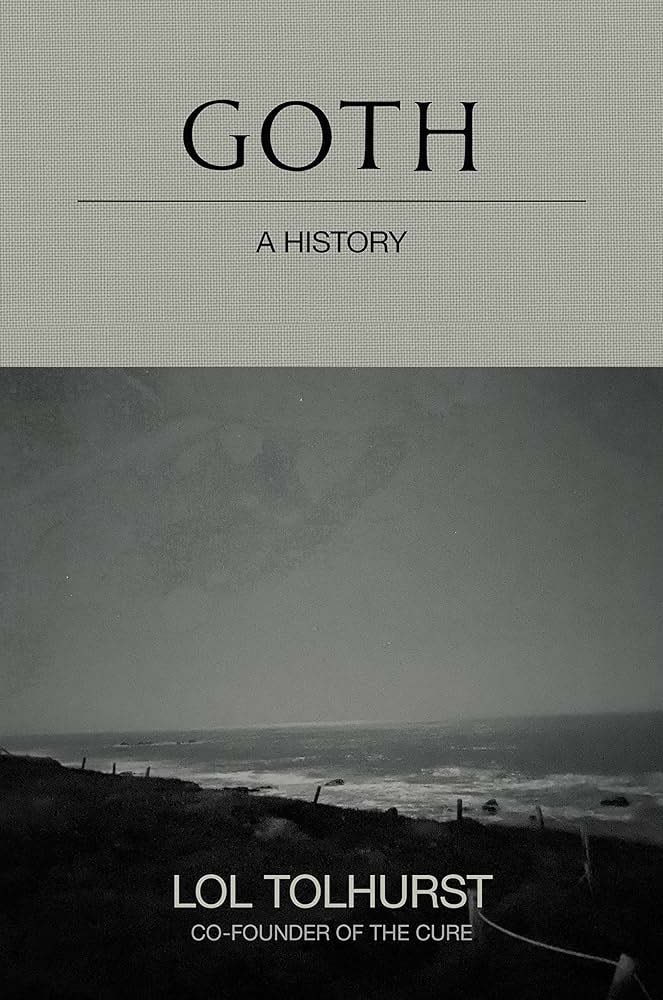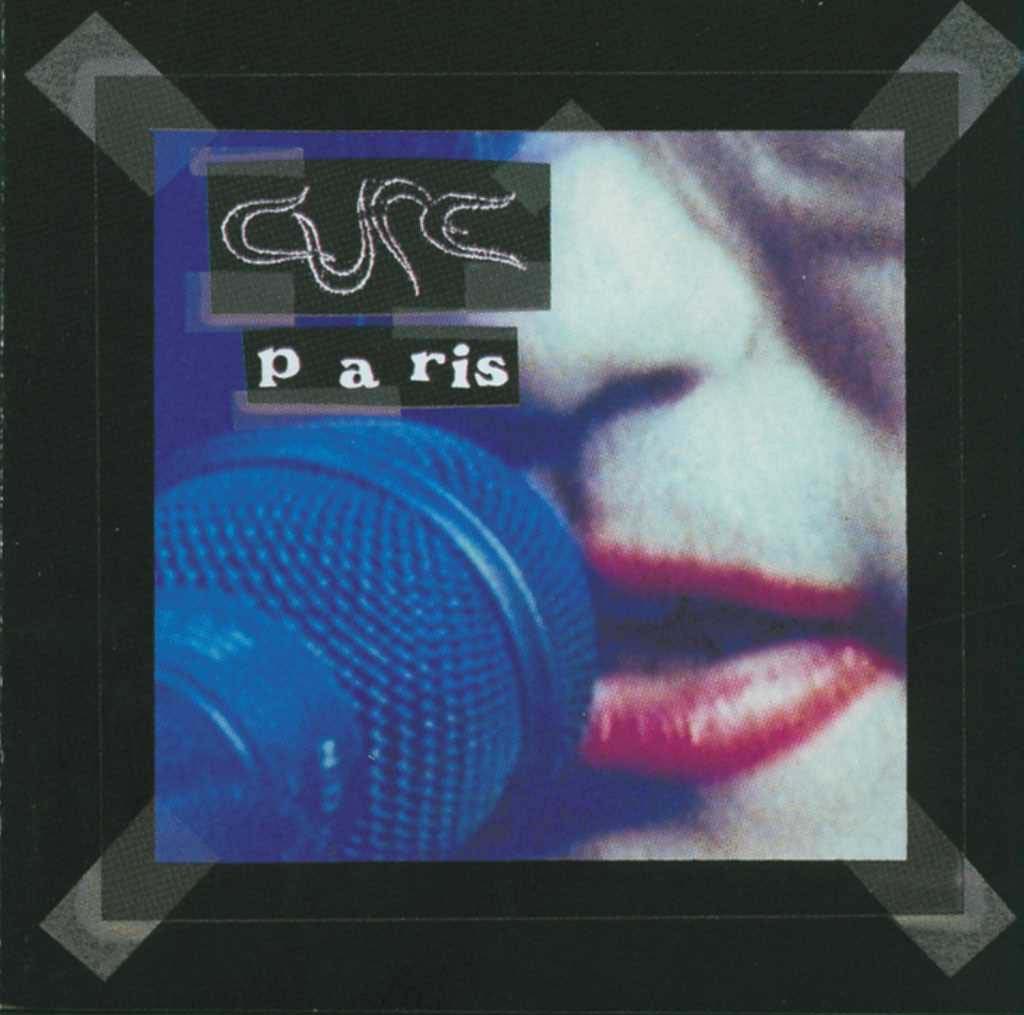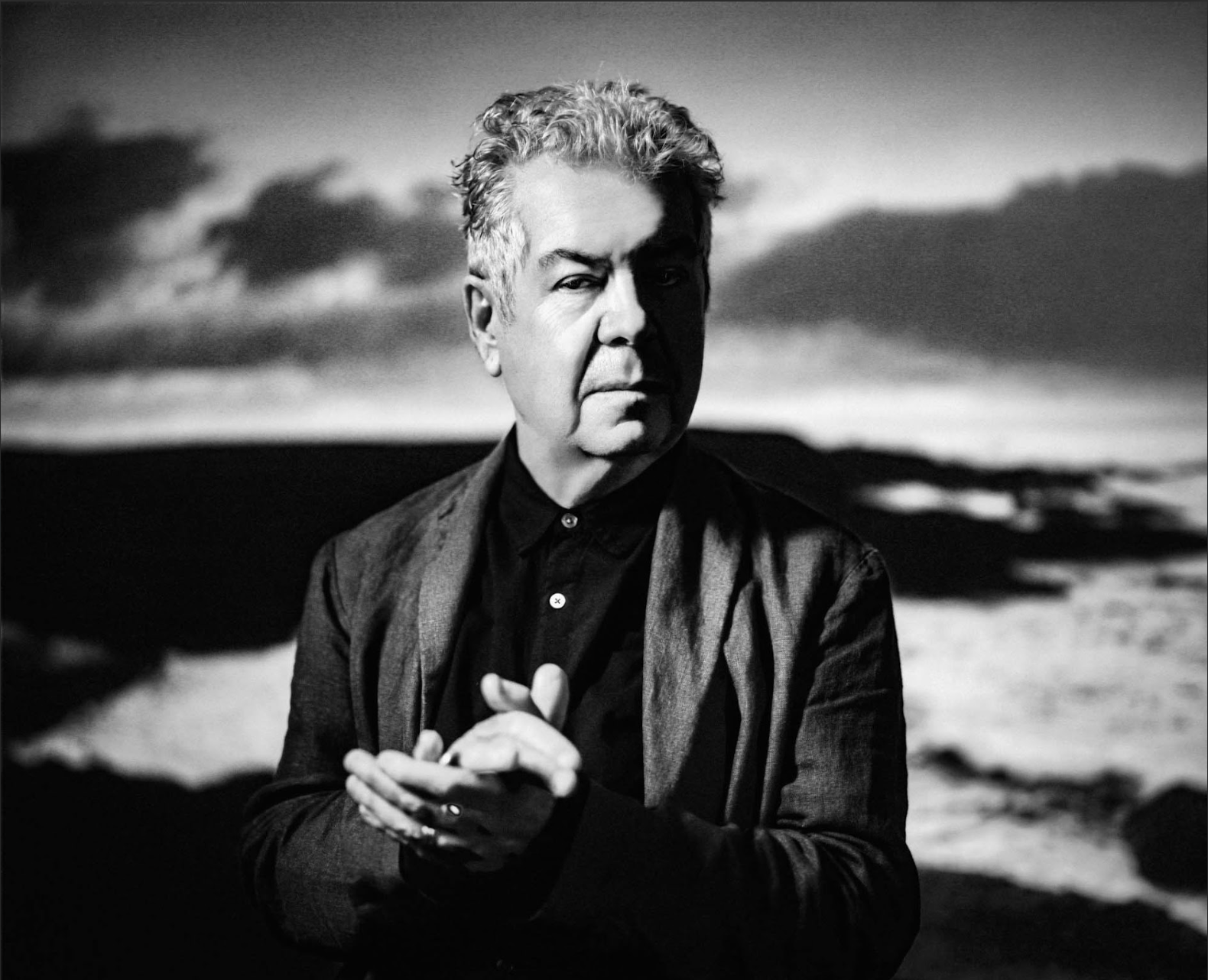- Music
- 28 Mar 24

With The Cure reissuing their classic live album Paris, ex-drummer Lol Tolhurst discusses the band's storied career, as well as his fascinating book Goth: A History.
This month sees The Cure reissue their 1993 live album, Paris, which finds Robert Smith and co. delivering typically immaculate takes on classics like ‘Shake Dog Shake’, ‘Lovesong’ and ‘Close To Me’. Also included is the sublime deep cut ‘In Your House’, from their 1980 album Seventeen Seconds.
As teased out by ex-Cure drummer Lol Tolhurst in his book Goth: A History – which explores both the titular genre and The Cure’s aesthetic origins – ‘In Your House’ was one of a number of Cure classics for which he wrote the lyrics. It’s a fact that’s not widely known.
“I don’t think it is,” reflects the affable Tolhurst from his LA home. “It wasn’t a question of us not saying anything, it’s more that people assume stuff after a while. It’s like, whoever’s singing must have written it. I found that old handwritten sheet and I was like, ‘Wow, I wasn’t imagining it, I did write that.’ I started to put small things together. At the beginning with The Cure, I wouldn’t say it was complete democracy, but it was a group effort on most things.
“Pearl Thompson reminded me of it a few years ago. I told him I was going to write my first book, Cured, and he said, ‘I’ve always known you were a writer.’ Sometimes you don’t see yourself clearly until you get some time between it all. My literary agent always said to me, ‘I wouldn’t sign anybody up to write their memoir in their thirties, because they don’t know shit.’ Wait until you’re 50 and then you can look at it.”

Advertisement
Mixing new wave quirkiness with the band’s trademark gloominesss, ‘In Your House’ is one of the greatest Cure songs. The narrator imagines himself wandering somebody else’s house in nocturnal reverie, before – in another customary Cure touch – the fantasy curdles and takes on a much darker hue.
“It’s funny, I was just talking to Budgie about that lately,” says Lol. “When you have a song that’s moving along, but there’s an underbelly where something’s wrong – that’s what I like, in all kinds of stuff. If I go to see a film, I want it to have that quality. I can’t watch half of the modern Marvel stuff. I loved Marvel comics when I was a kid, but I can’t watch those movies, because I know what’s gonna happen. We all do!
“The baddy’s going to do something bad for a while, and then the good guys will triumph. It’s the same story every time – it’s interesting sometimes to see the effects, but I can’t grasp anything else about it. “
As Tolhurst explains in the book, one of the lyrical details of ‘In Your House’ seems like something from a movie or a novel, but remarkably is inspired by real life. The line “I change the time in your house” is based on the father of Tolhurst’s then-girlfriend, who would wander their three-storey home at night, trying to get the clocks to synchronise.
“It’s funny, when somebody ever says it, I remember him exactly,” says Lol. “Because they had this three-storey house, and he had all the clocks on different landings. So he would just walk up and down, trying to get them all to match at the same time.”

Growing up in the ’90s, the UK music press may have conditioned me to be sceptical of goth, but I did eventually become a Cure fan. However, it wasn’t until five or six years ago that I did a proper deep dive on the band. I had started to notice their influence everywhere, whether it was James Murphy name-dropping them, Trent Reznor inducting them into the Rock & Roll Hall Of Fame, or their music turning up in hit movies like It.
Advertisement
“You know, it’s funny for me,” Lol considers. “I get instances that seem so strange and absurd that sometimes I’m almost laughing. I’ll be in the supermarket and hear us, or I go to the gym and I hear them working out to one of our old songs. It’s like, ‘Wow.’ You know you’ve become ubiquitous when that kind of stuff happens. It’s nice, I like it, but the only drawback is that people think they recognise you.
“I don’t mind if people recognise me and say, ‘Oh yeah, you’re in The Cure, blah blah blah.’ It’s when people kind of think they do, maybe they’ve seen a poster somewhere, and go, ‘Who are you?!’ I’m like, if you don’t know, I’m not gonna volunteer it! But yeah, it’s flattering, except when you’re in the supermarket in your tracksuit and you’re unshaven.
“People are going, ‘I’m you’re number one fan’ and I’m like, ‘Oh god!’ So now I always try to go out dressed properly, because sure enough, that’s the time someone will say something to me. But you’re right, it’s kind of everywhere in a subtle way.”
Being recognised can decidedly be a dual-edged sword for rock stars. I recently heard an interview with Manic Street Preachers’ James Dean Bradfield, in which he said that a while back, after a rugby match in Cardiff, a young man came up to him and said, ‘You’re from the ’90s!’
“I’ve got a worse one than that,” groans Tolhurst. “I’ve been doing a lot of book events recently and there’s people of all ages, from 16 to late sixties. Sometimes younger people come up to me to get a book signed, and they’ll end with, ‘My dad loves you.’ Nobody’s said yet, ‘My grandad loves you.’ I’m waiting for that to happen!”
 Lol Tolhurst by Louis Rodiger.
Lol Tolhurst by Louis Rodiger.Advertisement
PROPER MOMENT
Goth: A History follows on from John Robb’s similarly impressive book about the genre, The Art Of Darkness, from earlier last year. Goth, it would appear, is having a proper moment.
“It definitely is,” nods Tolhurst. “I was talking to someone earlier and saying just that. I know John was working on his book for about 10 years, and my friend Cathi Unsworth has done a book on it as well. It’s probably the right time. I talk to Dr Tracy Fahey in the book, and she said to me ‘Goth arrives in times of crisis.’ We’re certainly going through a crisis in the world right now.”
It definitely differs from goth’s traditional treatment in the music press, where it was often treated as a punchline.
“Cathi Unsworth said it the best,” reckons Tolhurst. “By making it humorous or a bit comic, people would try to defang it. The same thing happened with punk, they’d say, ‘Well, it’s about the spiky hair and the angry music.’ Yeah, it is, but it’s also about the fact that you wanna change things. This is another point where it’s come back up.
“That’s why my book is probably a lot more – academic’s the wrong word – but it tends towards the more serious at first. Because I wanted people to know I’m not coming in to go, ‘Oh, look at the funny guys dancing with bats on their heads.’ I want to have a serious conversation about why it’s still here and people are still drawn to it.”
Elsewhere in Goth: A History, Tolhurst analyses the enduring cultural impact of WB Yeats, even including a picture of himself at Yeats’ grave in Sligo.
Advertisement
“When I was there, it was like, ‘I know this is where he’s buried so I’m gonna go and see the grave’,” he explains. “Plus my friend Julianne Regan grew up around there. I can’t separate places from people. A few years ago, everyone started looking around Google Earth. I’m sure everyone checks out where they grew up, so I went walking around those streets.
“I called Robert up and said, ‘You know what? It is no surprise to me at all that The Cure sounded the way it did.’ Go onto Google Earth and look at these places – it’s right there. We played what we saw and grew up with in the dark, dank countryside. That’s where the stuff came from. When we’d just finished Pornography and the band broke up for a while, I went off for while to France, and down to the Basque region to see Salvador Dali’s museum.”
It was a fascinating trip.
“I stayed there for a week in the town where he lived, because I thought, ‘I want to understand’,” Lol continues. “It’s even more apparent with visual art, because you walk around that area and it just looks like Dali’s paintings. All the colours and everything are there in front of you. I mean, there are no soft watches melting down on the pavement, but there are lots of things that do look like his work.
“I always want to go to places where people come from or did their main stuff, because for me, it’s not separate. We don’t live completely inside our heads and make it all up from there. We observe what’s going on and process it, so it’s important to me to see those places.”
UPS AND DOWNS
Now aged 64, in the book Tolhurst is honest about the ups and downs of his life, noting at one point that his struggles with addiction led to a stay in the Priory, where the late Andy Fletcher of Depeche Mode was also receiving treatment.
Advertisement
Although he has enjoyed deserved acclaim for both Goth and his memoir Cured, Lol has also been keeping busy on the musical front.
Last year found him releasing the album Los Angeles, a collaborative effort with one time Siouxsie & The Banshees member Budgie, and Irish super-producer Jacknife Lee. For good measure, the album also featured guest appearances from the likes of James Murphy, The Edge and Bobby Gillespie.
“In the ’80s I was on this one touring circuit, which was The Cure, Madonna and Motley Crue,” explains Tolhurst. “We were all playing the same town the night before and the night after. I never met Madonna but I would bump into Tommy Lee in the bar. So I called Tommy up and said, ‘I know you’ve got the best studio in town Tommy, so can we come and use it? I wanna make a record.’
“He was like, ‘Yeah, sure, come over.’ So we went over and made this record with me, Budgie and Kevin Haskins from Bauhaus. We also had our friend Danny Lohner from Nine Inch Nails come and help us produce it. At the end, it sort of sounded like what you would think a record by guys from The Cure, the Banshees and Bauhaus – produced by Nine Inch
Nails – would sound like. Which was okay, but we didn’t want to go back to the past.”
It was at this point that Tolhurst turned to Lee for his input.
“Every day we would just go up to Jacknife’s studio,” he explains. “We would sit and have a cup of coffee, and talk in the morning, and he’d go, ‘Oh, well I’ve got a record about that.’ He’d pull it out, and we’d listen to it in the background while we were talking. After about an hour of that, we’d say, ‘Okay, shall we go and make some music?’ His studio has every synth and drum known to man. It was perfect.
Advertisement
“It was very organic, we didn’t start with any ideas as we went in. We just went in and did it that way. I’m very happy with the way it turned out.”
• Paris and Goth: A History are both out now.










